Recent Advances in Conductive Hydrogels for Electronic Skin and Healthcare Monitoring
- PMID: 40710112
- PMCID: PMC12293953
- DOI: 10.3390/bios15070463
Recent Advances in Conductive Hydrogels for Electronic Skin and Healthcare Monitoring
Abstract
In recent decades, flexible electronics have witnessed remarkable advancements in multiple fields, encompassing wearable electronics, human-machine interfaces (HMI), clinical diagnosis, and treatment, etc. Nevertheless, conventional rigid electronic devices are fundamentally constrained by their inherent non-stretchability and poor conformability, limitations that substantially impede their practical applications. In contrast, conductive hydrogels (CHs) for electronic skin (E-skin) and healthcare monitoring have attracted substantial interest owing to outstanding features, including adjustable mechanical properties, intrinsic flexibility, stretchability, transparency, and diverse functional and structural designs. Considerable efforts focus on developing CHs incorporating various conductive materials to enable multifunctional wearable sensors and flexible electrodes, such as metals, carbon, ionic liquids (ILs), MXene, etc. This review presents a comprehensive summary of the recent advancements in CHs, focusing on their classifications and practical applications. Firstly, CHs are categorized into five groups based on the nature of the conductive materials employed. These categories include polymer-based, carbon-based, metal-based, MXene-based, and ionic CHs. Secondly, the promising applications of CHs for electrophysiological signals and healthcare monitoring are discussed in detail, including electroencephalogram (EEG), electrocardiogram (ECG), electromyogram (EMG), respiratory monitoring, and motion monitoring. Finally, this review concludes with a comprehensive summary of current research progress and prospects regarding CHs in the fields of electronic skin and health monitoring applications.
Keywords: E-skin; conductive hydrogels; electrophysiological signal; healthcare monitoring.
Conflict of interest statement
The authors declare no conflicts of interest.
Figures

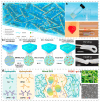
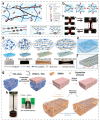
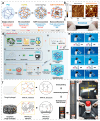
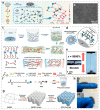


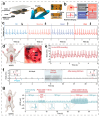
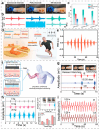
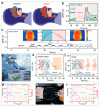
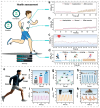
Similar articles
-
Xanthan gum-toughened nanocomposite conductive hydrogel for wearable sensors and smart livestock monitoring.Int J Biol Macromol. 2025 Jul;318(Pt 1):144983. doi: 10.1016/j.ijbiomac.2025.144983. Epub 2025 Jun 5. Int J Biol Macromol. 2025. PMID: 40482751
-
Advances and future perspectives in hydrogel-based sensing technologies: a comprehensive review.Nanotechnology. 2025 Aug 21;36(34). doi: 10.1088/1361-6528/adf8f3. Nanotechnology. 2025. PMID: 40774289 Review.
-
Advancements in MXene-based composites for electronic skins.J Mater Chem B. 2024 Jan 24;12(4):895-915. doi: 10.1039/d3tb02247a. J Mater Chem B. 2024. PMID: 38194290 Review.
-
Recent Advances in Liquid Metal-Based Stretchable and Conductive Composites for Wearable Sensor Applications.Biosensors (Basel). 2025 Jul 19;15(7):466. doi: 10.3390/bios15070466. Biosensors (Basel). 2025. PMID: 40710115 Free PMC article. Review.
-
Recent Advancements in Wearable Hydration-Monitoring Technologies: Scoping Review of Sensors, Trends, and Future Directions.JMIR Mhealth Uhealth. 2025 Jun 13;13:e60569. doi: 10.2196/60569. JMIR Mhealth Uhealth. 2025. PMID: 40513095 Free PMC article.
References
-
- Li L., Liu W.-D., Liu Q., Chen Z.-G. Multifunctional Wearable Thermoelectrics for Personal Thermal Management. Adv. Funct. Mater. 2022;32:2200548. doi: 10.1002/adfm.202200548. - DOI
Publication types
MeSH terms
Substances
Grants and funding
LinkOut - more resources
Full Text Sources

